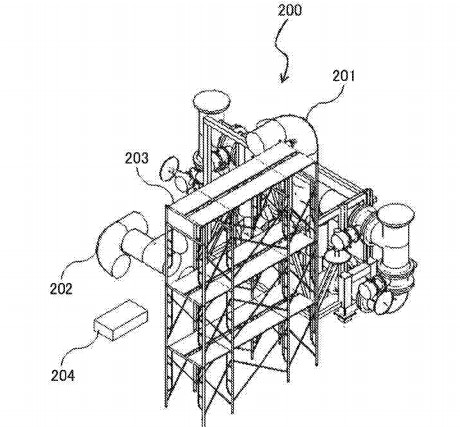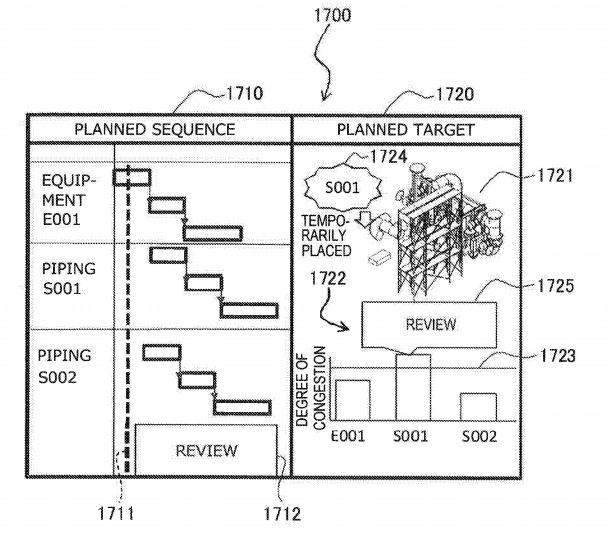31/05/2019
In my article of 3rd April 2019, available here, I discussed how UK IPO Patent Hearing Officers appear to be prepared to take a more pragmatic approach to the question of excluded subject matter than might be considered to follow from the guidelines alone. This article looks at one of those decisions in more detail, namely Decision O/809/18, relating to Hitachi Ltd’s GB patent application GB1404925.8.
The case is interesting as it relates to a computer implemented method and device for assisting with the construction of an industrial facility, and as such, represents what is sometimes referred to as a “business method” or “solution patent”: in other words, an invention that is concerned largely with problems that are seen to be logistical or organisational rather than technical.
In Europe, the idea that software related inventions must provide a solution to a technical problem is well known, and although the UK IPO uses slightly different wording in its test for patentability, there is considerable overlap with the test at the EPO (the two tests are intended to be the same, though in practice a number of differences in interpretation occasionally arise).
Background
Hitachi’s application GB1404925.8 (now granted as GB2508562) related to a computer-implemented construction site management method, and addressed problems with the real time construction of an industrial facility, such as a power plant.
The application noted that when constructing an industrial facility, a designer typically produced a three dimensional shape model of the completed plant, from which the construction could be arranged and planned. The resulting construction plan would typically be developed based on the experience of a builder, the final positioning of any construction elements required for the facility (such as piping and other structures), as well as knowledge of how much space construction materials would occupy in the construction area (such as scaffolding, equipment and tools).However, such plans were never optimal, as they did not take into account the actions of construction workers in implementing the plan, particularly with regard to actions such as the temporary placement of piping in the construction area, the use of temporary scaffolds to fastening piping in place, as well as the inspection of elements. By way of context, the patent diagram below (Figure 2 in the patent) illustrates a plant section 200 having piping sections 202 and 203 ready for installation, as well a tool 204 and scaffolding.
 The Invention
The Invention
The invention in Hitachi Ltd’s application therefore involved the use of a laser measurement device to generate a three dimensional “real time” scan of the construction site, as well as the generation of construction information setting out a fabrication sequence for the plant that could then be displayed on screen. Analysis of the three dimensional real time scan determines the presence of “shape data” not belonging to the design model, which is subsequently identified as scaffolding, tools and other temporarily placed components. This is then factored into the construction information with alerts and other information to assist the process of construction.
 In particular, one of the tools to aid construction was the calculation and indication of a degree of congestion around a tool or piping part detected in the construction site, and the generation of a warning to a user that this congestion would need addressing during the build. The patent illustrates this concept in Figure 17 shown above, in the form of a graphical user interface including a planned sequence of installation 1710, as well as a status report 1720.
In particular, one of the tools to aid construction was the calculation and indication of a degree of congestion around a tool or piping part detected in the construction site, and the generation of a warning to a user that this congestion would need addressing during the build. The patent illustrates this concept in Figure 17 shown above, in the form of a graphical user interface including a planned sequence of installation 1710, as well as a status report 1720.
In the bottom right hand corner of the interface, the measured Degree of Congestion of different construction elements (Equipment E001, Piping S001, and Piping S002) are plotted against a threshold 1723. When congestion is detected as exceeding the threshold, a warning “REVIEW” 1725 is generated and displayed on screen. Based on this, the user can opt to change the start time of a construction activity involving the affected element, as well as to rearrange the tools or elements in the vicinity of the affected element so that the build can proceed efficiently and safely.
Despite the use of a computer and laser measurement devices to generate real time site data for comparison with a technical construction plan, the UK IPO Examiner had objected that the invention related to a business method (or device programmed to implement a business method) for organising a team of construction workers. The Examiner objected that the invention:
“has the advantages of enabling the user to manage the construction field efficiently and reduce delays to the construction that could occur due to non-design components causing congestion issues”.
The Examiner however saw this as “purely a business consideration rather than technical one”.
Scheduling
Methods or devices for scheduling activities are typically seen as excluded subject matter, in that they constitute nothing more than a conventional computer programmed to carry out an administrative or organisational task, and because conventionally programmed computers are usually excluded from patentability unless they can be seen to solve a technical problem. This is the case even if the scheduled activities themselves apparently have a technical flavour or character – as the scheduling of technical activities is not necessarily a technical problem of its own.
In the O/809/18 decision, the Hearing Office rejected the applicant’s argument that managing a construction site is inherently technical, but did take the view that “the management of a construction site wherein physical adaptations to the construction site are made in response to real time parameters in order to increase the efficiency and/or safety of the construction site goes beyond a mere administrative procedure or a resource management activity”.
The Examiner also noted it was significant that the claimed invention displayed a warning on the display unit if the degree of congestion exceeded a predetermined value, and referring to the High Court Decision Protecting Kids the World Over (PKTWO) Ltd’s patent application, [2011] EWHC 2720 (Pat); [2012] R.P.C. 13, took the view that this feature confirmed that the invention provided a patentable contribution, and something more than mere excluded subject matter.
Saved by the Bell
Protecting Kids the World Over (PKTWO) Ltd’s patent application, related to a system for implementing parental controls over electronic communications to ensure that children were not exposed to inappropriate content or language. If such content were detected, the system would send an alert notification to the parent, in the form of an email or SMS message. The detection and generation of the alarm depended on monitoring data packets using a sequence of “hash tables”, the assigning of a score to the data packet depending on the expressions found in the data packets, the generation of an aggregate alert level, and the passing of this to a security warning algorithm that finally generated the alert notification.
The patent application in PKTWO had been refused by the UK IPO Hearing Officer and subsequently appealed to the UK Patents Court. However, there, the judge took the view that although viewed at a high level of generality, alarm notifications were not novel, an improved alarm operating more rapidly and reliably could make a patentable contribution.
The Hearing Officer in Hitachi found the Judge’s decision in PKTWO persuasive, concluding that:
It is arguable that the present application meets the threshold for patentability set down by Floyd J. in PKTWO merely by the generation of a warning display based on evaluated criteria. However, the present application exceeds this threshold by including actions that are effected as a result of the generation of the warning display and therefore I am in no doubt that the present invention is technical in nature. As a consequence, the invention does not fall solely within excluded subject-matter.
Conclusion
While computer implemented devices for scheduling activities are not usually sufficiently technical for patentability in the UK or Europe, the interaction of such a scheduling system with real world entities, such as sensors for collecting data and user interfaces that displays warnings, may therefore be argued to provide a technical contribution.
However, applications directed to such inventions will need to be carefully drafted to ensure that the warning that is to be relied upon is more than a mere high level (and generally well known) alarm notification. Instead, the generated warning will need to combine with the process being implemented such that it makes a technical contribution. This might include a more reliable or more rapid warning signal, or implementation of a safer more efficient process, once the warning signal is acted upon.
As 5G networks are rolled out to support IoT infrastructure, machine-to-machine and machine-to- user communications will become increasingly common, and may form expanded systems and processes for warning notifications between interacting entities. The additional guidance offered in the PKTWO and Hitachi decisions is therefore very well timed.
This article is for general information only. Its content is not a statement of the law on any subject and does not constitute advice. Please contact Reddie & Grose LLP for advice before taking any action in reliance on it.


